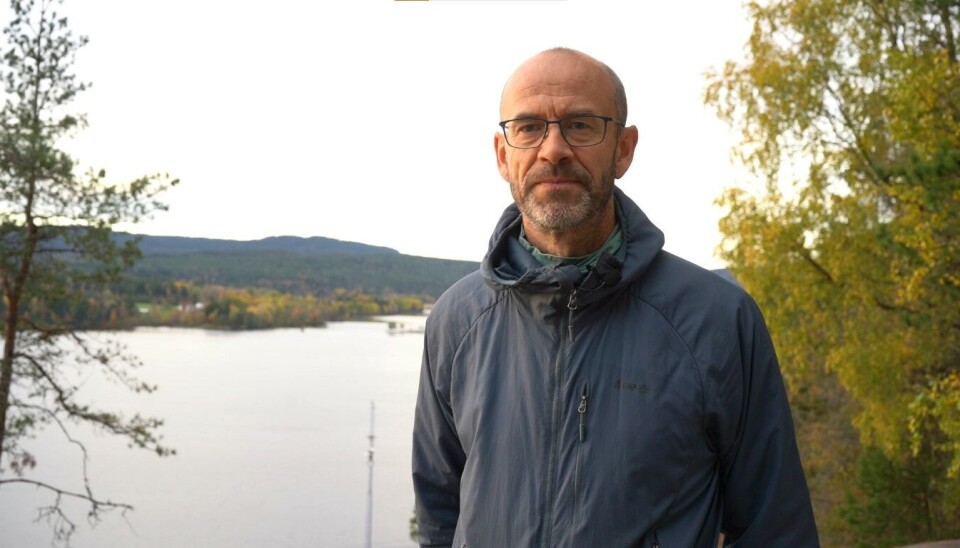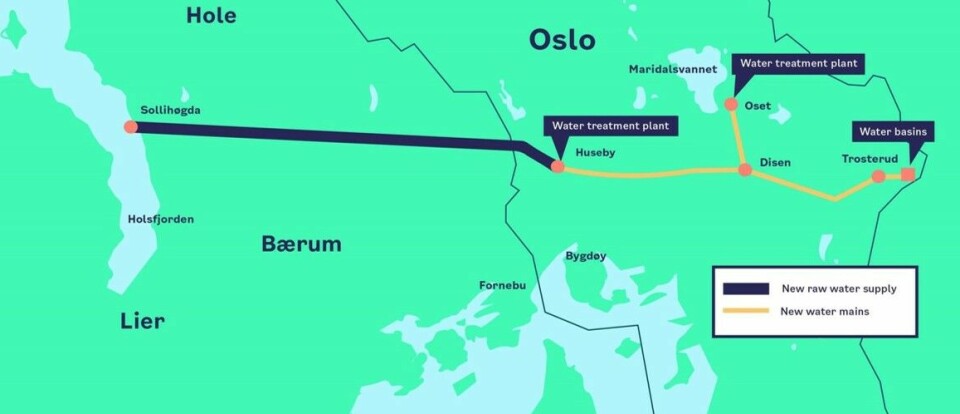#Issues

How to Face Future Droughts in Oslo?
While there is no water reuse in Norway, Oslo is investing billions in new infrastructure to strengthen its water resilience.
“Take shorter showers, turn off water while brushing teeth, and avoid watering lawns.” Here is the advice that all of the almost 700,000 inhabitants of Oslo received in a message during spring 2022. For a few years now, the capital of Norway has been experiencing water shortage during spring and summer seasons. The Maridals Lake (Maridalsvannet), which accounts for 90% of Oslo’s drinking water supply, is facing difficulties in summer when there’s a lack of rain or snow in Nordmarka from the rivers of which the lake gets its water.
However, Norway is one of the countries where the water consumption per person is the highest. On average, according to Statistics Norway (SSB), in 2022, a Norwegian person used 171 litres of water every day. It was already 22 litres more than in France, for example, where the French used 149 litres, and 66 litres more than in Denmark, where the Danish used only 105 litres of water per day. “I could imagine that Norwegians have this idea that water is in abundance and that we can just use it as much as we want, that we can just keep the tap on. We don’t really consider this a threat. We need more information about this,” comments Lucas Wenk-Wolff from the Green Office of the University of Oslo (UiO).
90% of clean water is coming from lakes and rivers
On a general basis, Norway indeed has an abundance of clean water. A total of 90% of the country’s water supply is coming from what is called “surface water” – lakes and rivers. Norway is definitely not lacking in those. However, the country, and Oslo in particular, has experienced unexpected droughts in the past few years, especially due to climate change. This is why reducing water consumption by reusing it might be a good solution.
“In Norway, there is no water reuse,” explains Christian Vogelsang, senior researcher at the Norwegian Institute for Water Research (NIVA). According to him, about one third (there is a total of around 2500 in Norway, Norwegian Environment Agency) of all wastewater is treated in very advanced wastewater treatment plants (there are two of them in Oslo) equipped with chemical and biological treatment units. “They are very good at removing particulate matter including microplastics, biodegradable organics, nutrients, and certain micro-pollutants. But,” adds Vogelsang, “there are still some of these left that could be a challenge when talking about water reuse. Another important challenge is pathogens that could remain in the water.”
Some hazardous elements, then, could be left in the treated water. It raises a question concerning the impact on the ecosystem of the Oslofjord from the release of treated wastewater. In the end, this is the final destination of waste water here in the city. “There have been concerns about microplastics and micro-pollutants that can have a toxic effect on the living organisms in the fjord,” says Vogelsang.

Separating “greywater” and “blackwater”
Solutions exist to reuse more water in Norway. According to Vogelsang, “A really good way would be to do a sort of source separation.” Household wastewater can be divided in two categories: blackwater (the one from the toilets) and greywater (from the shower, sink, etc.). “The least polluted greywater could be reused locally with very limited treatment, for instance, for flushing toilets, washing cars, or whatever,” explains the researcher.
A new water supply for Oslo
Solutions to deal with droughts are on their way in Oslo. The capital will not necessarily run out of water with Maridals Lake, but, “It puts us in a very vulnerable situation if potentially something happens to the water supply”, explains Gro Elden, Communication Manager for the “New Water Supply Project” at the Oslo Municipality. “We need an extra-source to be able to have the security that we can supply water at all times.” For example, in summer 2022, “There was not enough water for the normal usage in the city,” tells Elden. The municipality of Oslo then gave advice to its population on how to save some water: such as not washing cars more than needed or using eco-program on the dishwasher. The full list is available on their website, and those practices can be applied all year-long.
The “New Water Supply Project,” with a 100-year perspective, is the largest investment ever of the City of Oslo. A total of 26.8 billion Norwegian kroner was invested in it. The new facility will not replace the lake, but will be there for support and security. “We will still use Maridalsvannet as the main source,” notes Elden from the Oslo Municipality.
The new source of water will be located in Holsfjord, 19 km from Oslo. The water will be taken directly from the fjord. The new underground water-treatment plant will be at Huseby, in the Western part of Oslo. The two places will be joined by a 19 km tunnel.
New water mains from the underground treatment plant at Huseby are also under construction. They will run in a 11 km long tunnel towards Alna and will be connected to the existing distribution network in the city.

Elden concludes, “The water supply from Holsfjord is more than enough for the city of Oslo. It can supply everything if there is a problem with Maridalsvannet. Then we have security.” According to the current schedule, the project should be operational on the 1st of January 2028.
































